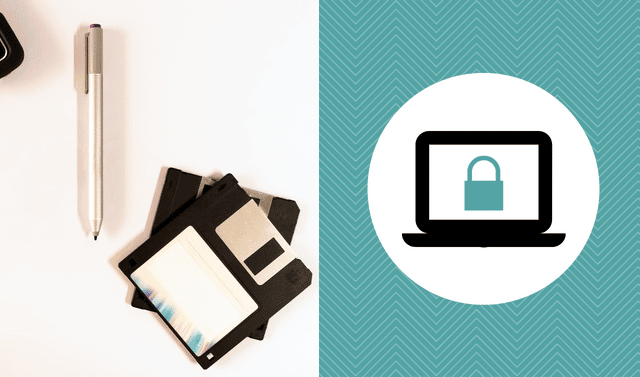Should you donate your family heirlooms and papers to an archive? Judy Lucey, assistant archivist at the
New England Historic Genealogical Society (NEHGS) gives us the scoop.
Q. Why would someone consider donating family materials to an archive?
A. One person always seems to be the caretaker of the family treasures. It gets to the point where he or she realizes something could happen to these documents. You want them to be in a place where they can be preserved and shared.
Q. What types of materials do repositories accept from everyday people?
A. It depends on the archive and the mission. NEHGS preserves, collects and interprets documents of American families. We accept family papers, Bible records, original historical documents, photographs and genealogical research. Our collection represents families from New England and the northeastern United States from the 1600s into the 20th century.
Q. How does someone choose an archive?
A. If you have items such as textiles, tea sets or silver spoons, you may want to give them to a museum that specializes in decorative arts. It also depends on any relationships you’ve had with museums or historical societies over the years. Often, if a person has volunteered for an organization or she’s a longtime member, she’ll choose that society.
Q. Will my donation still be accessible to me and my family?
A. At NEHGS, we make the donation accessible to the donor and immediate family members, but in a deed of gift—the legal agreement that accompanies the donation—they transfer all rights to us. That means we own the item, as well as any copyrights and literary rights. We may choose to digitize it and put it on our website, allow its publication in our quarterly magazine or use it in lectures.
Q. Is my donation tax-deductible?
A. In order for an item to be tax-deductible, you need a letter from a licensed appraiser. We don’t do appraisals here, but recently we had some Civil War letters come in, and the donor got those
appraised before donating them.
Q. Will anyone ever want to see my papers, or will they languish in a vault?
A. Even just a few years ago, only one or two of our collections were used regularly. But since the collections have been cataloged online and descriptions of the items can be searched, usage has gone up. These days, I’ll catalog material, and within weeks someone will come in to use it. More and more, people are turning to unpublished material to supplement their research.
Q. Any last words on encouraging people to donate?
A. As an archivist, I think it’s a privilege to care for other people’s documents. I really feel I’m preserving someone else’s memories and the history that they’ve entrusted to us.
Resource Roundup
You can buy archival packaging customized for just about every type of heirloom textile. Some examples:
Textile preservation kit for children’s clothing, $31.05
Gaylord, (800) 962-9580
Archival-quality flag box, $13.30
SafeKeep quilt and garment kits, $47.55 to $55.85
Light Impressions, (800) 828-6216
Acid-free unbuffered tissue paper, 25 sheets for $28.53
Gaylord, (800) 962-9580
Archival Action: Storing Textiles
Time: 30-60 minutes
cost: less than $30
Who doesn’t have an heirloom textilelying around? Take an hour to protect and preserve that baptism dress, flag or embroidery with these steps from Esther Methe, chief conservator at
The Textile Museum in Washington, DC.
1. Wash your hands and remove any rings or other jewelry.
2. Examine the textile. Don’t pack it away with bugs in it. Note the condition and any changes since you last checked it.
3. Store it flat to prevent creasing. If you must fold the item, do so loosely, with the fewest possible folds. Cushion the folds with acid-free tissue paper or clean, white cotton fabric.
4. For textiles that should keep their shapes (such as a purse or booties), gently stuff soft tissue inside—but don’t overstuff.
5. Wrap the textile in clean, white cotton fabric or acid-free tissue paper. Acid-free unbuffered tissue is your safest all-around choice for use with plant-based fabrics—cotton, flax or jute. Buffered tissue may harm animal-based fabrics, such as leather, wool, silk or fur. When in doubt, use unbuffered.
6. Place wrapped textiles in an archival box of acid-free cardboard, polyethylene or polypropylene. Use a box that’s large enough not to constrict the contents.
7. Document the heirloom—write down its creator, previous owners, uses and history. Add a photo if you have one. Put your writeup in a clear polyethylene sleeve taped to the outside of the box.
8. Store the box in a controlled environment, without extremes in temperature or humidity. A closet or shelf in your daily living space is best.
9. Inspect your textile annually for signs of damage. Take this opportunity to refold the material in the opposite direction, too.
For more detailed instructions, visit Guidelines for the Care of Textiles.
Heirloom ID: Whoa, Baby!
This infant feeding bottle was likely made in France or England. These bottles required skilled craftsmanship—they were relatively costly. Well-turned screw threads join the nipple section to the bottle, though screw threads were otherwise almost unheard of during this period.
This is a rare specimen in excellent condition. Pewter bottles were often melted and recast into new items. Because pewter is malleable, most surviving examples have many dents. Eventually tin, and then glass, replaced pewter bottles, although it took until the early 1900s to develop a truly practical rubber nipple.
The pewter contained lead, but probably rarely poisoned infants. To leach the lead out of the metal, the bottle would have had to come in contact with an acidic liquid such as tomato juice—not milk.
From the January 2010 Family Tree Magazine




